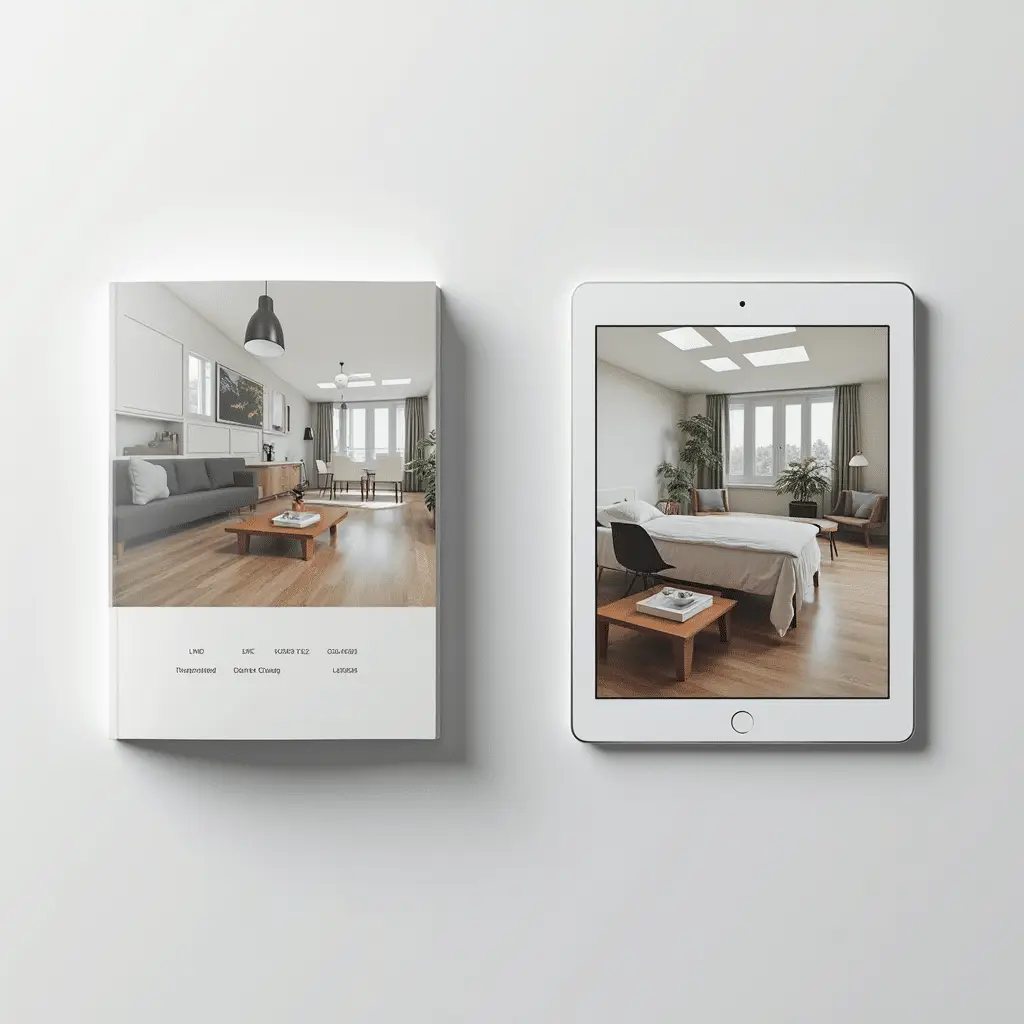In every industry, the battle for brand attention is constant. Captivating audiences with fresh, innovative approaches has become an Olympic-level task. Traditionally, print brochures were one of the few ways to reach a broad audience, with mail and door drops being key distribution methods – Tupperware catalogs are a good example. However, the advent of the internet and digital technology has transformed this landscape, making digital brochures a popular choice for their ability to engage audiences with interactive features.
This shift doesn’t mean traditional brochures are obsolete; print and digital formats can work hand-in-hand, creating a powerful omnichannel strategy that reaches customers at multiple touchpoints. So, are digital or traditional brochures better for your business? Let’s find out.

Traditional Print Brochures: Strengths and Limitations
Strengths:
- Tangible Experience: Printed brochures offer a physical, hands-on experience that can be especially effective in retail settings or events.
- Brand Credibility: A well-designed print brochure can convey a sense of professionalism and reliability, resonating with audiences who value quality materials.
Limitations:
- Production Costs: Printing and distribution can be costly, especially for large campaigns that require frequent updates. According to GD Print, the price of printing 5000 reasonable-quality brochures alone is between $300 and $500.
- Limited Reach and Engagement: Printed brochures reach a confined audience and can’t offer the interactivity and data-tracking capabilities of digital formats.

The Digital Advantage: Expanding Reach and Cutting Costs
Digital brochures offer a range of benefits that make them attractive to modern marketers. Combined with print materials, they create a robust strategy that covers physical and digital channels, enhancing customer experience.
Benefits:
- Cost-Effectiveness: Eliminating print costs allows digital brochures to reach a wider audience at a fraction of the price.
- Global Accessibility and Instant Updates: Digital formats allow for broad distribution and real-time updates, keeping information current without reprinting.
- Data Insights: Track engagement through metrics like views, clicks, and time spent, which can guide future marketing decisions.
- Interactive features: Using GIFs, videos, embedded lead forms and search functionality can boost engagement and conversion for brands
Engagement Boost: Interactive Features Unique to Digital Brochures
Let’s dive further into those invaluable interactive features. Digital brochures bring an element of interactivity that traditional print materials can’t offer. These features engage audiences actively, keeping them connected with the brand for longer and enabling seamless transitions between customer journey touchpoints.
Interactive Elements:
- Embedded Videos: Visual storytelling brings products and services to life, offering viewers an in-depth understanding.
- Clickable Links: Direct readers to websites, product pages, or contact forms to encourage immediate action.
- 3D Visuals and Interactive Models: Ideal for product showcases, 3D visuals provide a virtual hands-on experience.
- Forms and Surveys: Collect feedback directly within the brochure, turning it into a two-way conversation that fosters engagement.
Case Study: Coulisse’s Transition to Digital Brochures
Coulisse, a Netherlands-based home décor company, has successfully integrated digital brochures into its marketing. Traditionally, they use hardcover books and adopt digital catalogs to enhance customer experience and reduce production time. By adding interactive elements, Coulisse improved engagement and streamlined its product launch processes, keeping information up-to-date for its audience.
Coulisse provides a convenient swatch request service, allowing customers to select fabric samples directly from their digital catalog. With an easy-to-use custom order form located directly in their digital catalog, customers can effortlessly request swatches to test colors in their homes. This streamlined ordering process enhances the customer experience and potentially significantly increases conversion rates.
Print and Digital: A Strong Omnichannel Strategy
While digital brochures excel in interactivity and data tracking, combining them with print materials can create a powerful omnichannel strategy. Picture a customer browsing in-store and noticing a stylish poster displaying the latest looks—each outfit featured with a QR code that links to a digital brochure. With a quick scan, they’re taken to an interactive digital experience where they can explore product details, watch styling videos, and even access purchase links.
This blend of print and digital creates a seamless journey across channels, enhancing engagement and supporting a “research online, purchase offline” (ROPO) approach. By connecting the tangible appeal of in-store displays with the instant accessibility of digital, brands can capture attention, build trust, and drive action at every touchpoint.
Choosing Between Print and Digital Brochures: Finding What’s Right for Your Business
When choosing between print and digital brochures, no single answer fits all. While digital brochures offer unique advantages with interactive features and data-driven insights, print brochures still hold value for businesses that rely on physical materials’ tactile, memorable appeal. In many cases, an omnichannel approach—using both print and digital formats—can create the strongest impact, as each plays a role in capturing attention, building trust, and guiding customer journeys.
As seen with Coulisse, digital brochures can enhance engagement and streamline updates, offering businesses a way to deepen connections with their audience. Whether print, digital, or a blend of both, the key is selecting a strategy that aligns with your brand goals and resonates with your customers.


